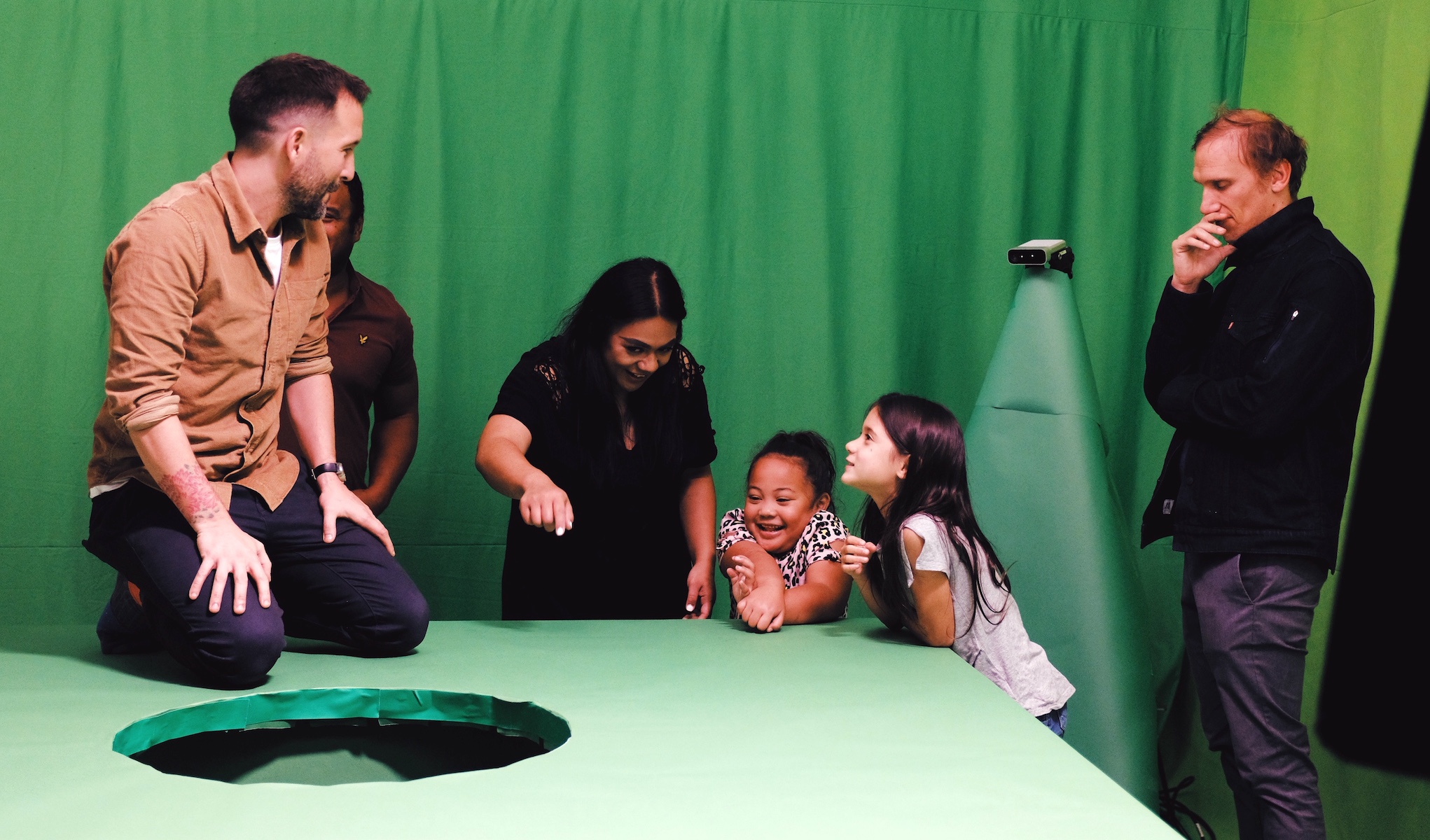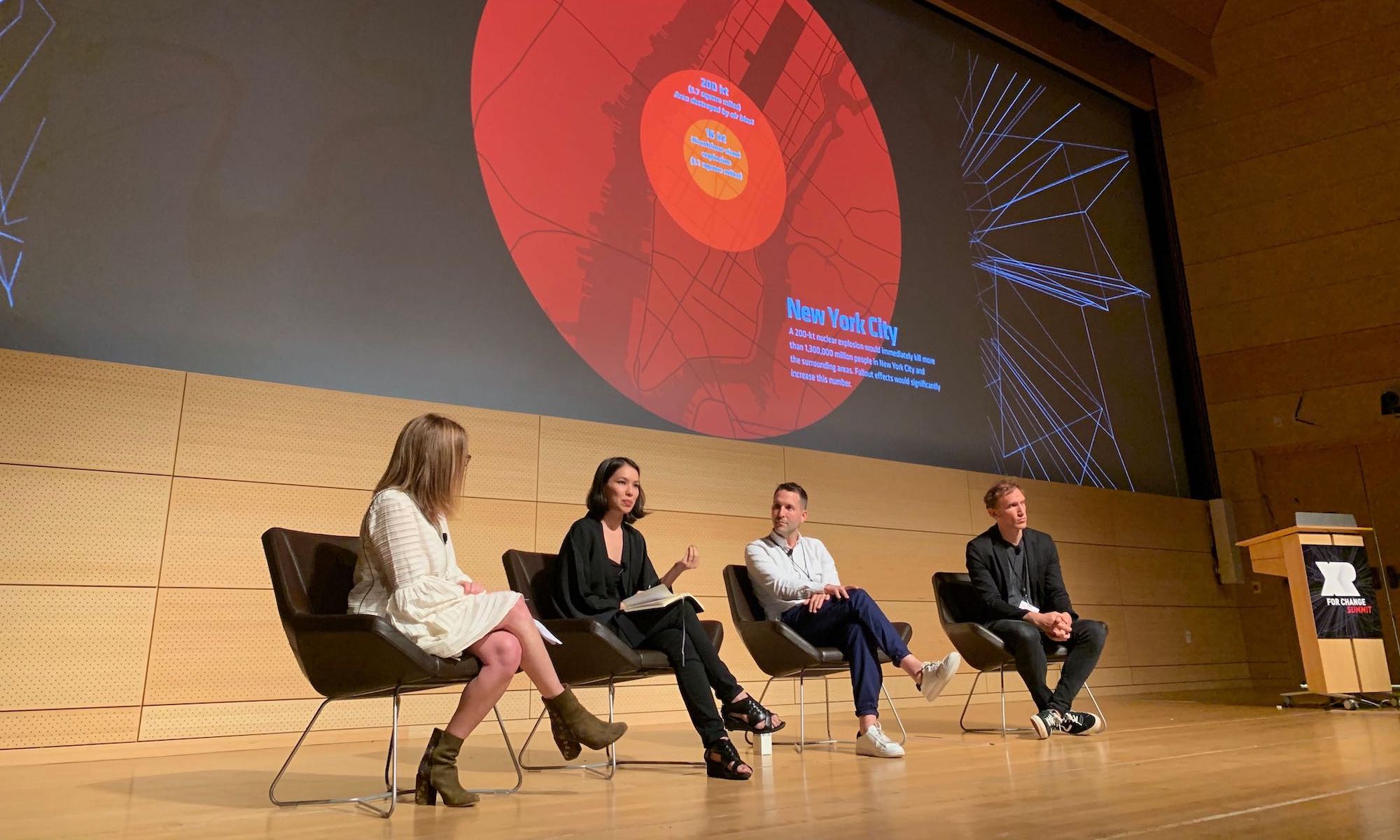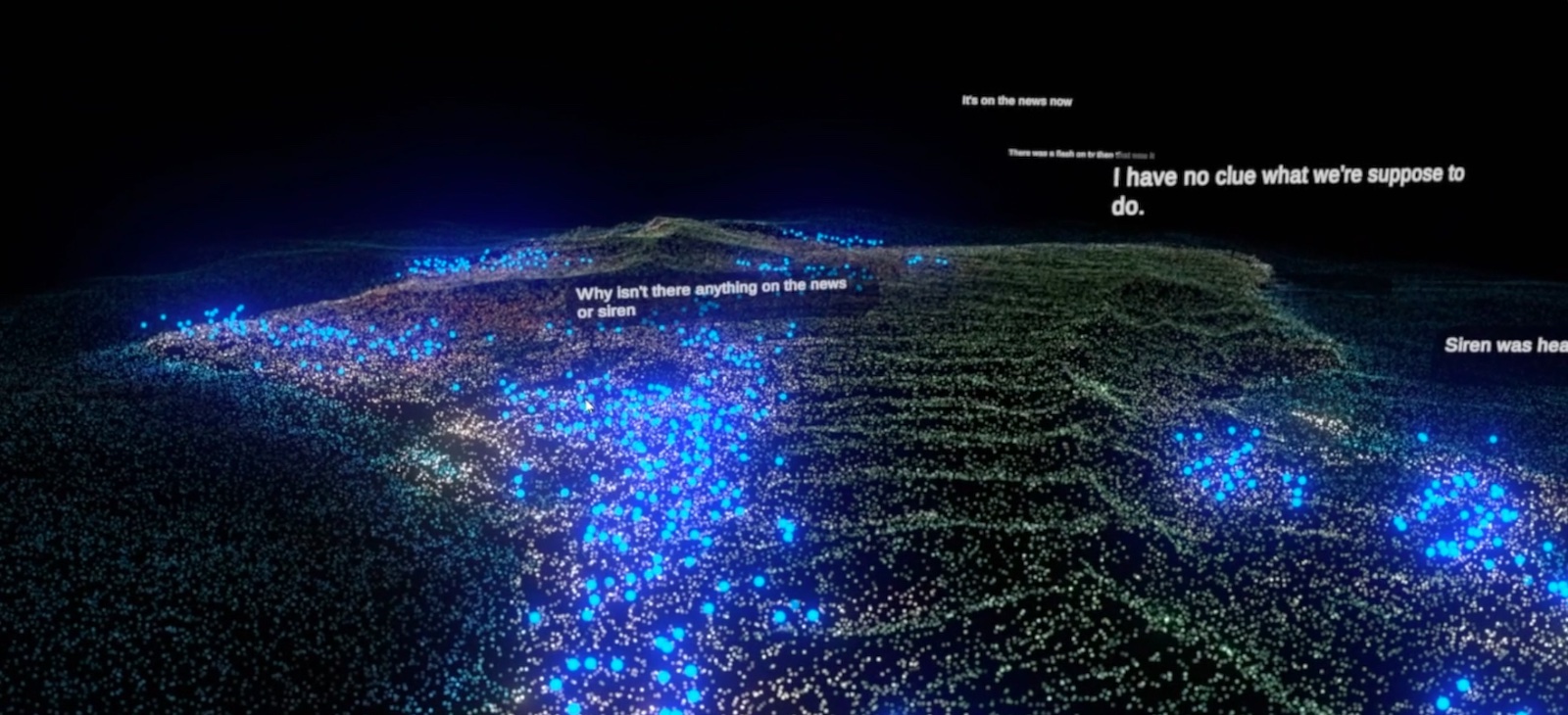May 2021
Virtual Reality for Public Engagement
on Nuclear Arms Control and Disarmament
New approaches and fresh ideas are needed to revitalize nuclear security and arms-control initiatives. This project builds new partnerships around the use of immersive virtual reality (VR) to explore the possibilities this new medium offers to raise public awareness of the risks from nuclear weapons stockpiles and prevailing nuclear postures and plans, and to engage new audiences in discussions about nuclear arms control and disarmament.
The effort focused on the creation of a VR experience depicting the false ballistic missile alert sent via text message to the people of Hawaiʻi on January 13, 2018, which lasted 38 minutes before it was recalled. Pairing testimonies from those in Hawaiʻi together with cutting-edge capture and animation techniques, the VR experience weaves together a tapestry of stories about how individuals coped with the possibility of life being ended by nuclear weapons.
With support from the MacArthur Foundation, the project partners designed and created a seven-minute vertical slice of the VR experience. We feature and discuss this endeavor here. This prototype was used to generate new partnerships and collaborations toward bringing to life a full-scale VR documentary film, created by Archer’s Mark and Atlas V and funded by Oculus, Arte, and the BFI. The prototype project also laid the groundwork for a novel public impact campaign that will accompany the full-scale experience to reach a wide audience and engage new actors and communities in public discourse on nuclear issues and policy.
THE PARTNERS
For this project, the Program on Science and Global Security (SGS) partnered with leaders in the VR and social impact space. The project began as a collaboration with Games for Change (G4C), a nonprofit based in New York that works to empower game creators and social innovators to drive change using games and immersive media. G4C convenes stakeholders through their annual G4C Festival and XR summit, which foster the exchange of ideas and resources through workshops, design challenges, and consulting projects.
SGS and G4C conducted a wide search for a creative partner to generate the VR experience. We selected the duo of Archer’s Mark and Atlas V, the creative forces behind the award-winning non-fiction VR experiences Vestige and Notes on Blindness. With Archer’s Mark based in London and Atlas V based in France, our transatlantic team was inspired us to think about how to design the experience to reach a diverse global audience.
THE PROTOTYPE
After fielding a number of ideas and approaches, our team identified the Hawaiʻi false ballistic missile alert as an untold story that clearly evinces the immediacy of the nuclear threat and its connection to people’s everyday lives. We set about identifying interviewees in Hawai’i willing to share their experience of the day with our team and were struck by the power, depth and variety of their experiences. This process helped inform our team’s approach to the art direction of the piece. We aimed to keep the visuals raw, abstract and fluid to allow personal testimonies to have their full impact while being supported by the first person perspective that the medium of VR uniquely enables.
The VR prototype experience is anchored by the testimonies of Cynthia Lazaroff and Bruce Allyn, who experienced the alert from their home in Hawaiʻi. As they retrace their steps that morning, they reflect on their immediate reactions and the urgency of the need to connect with loved ones, as well as the larger significance of what it means to live in a world that is constantly under the threat of nuclear weapons.
Since 1945, documentary testimonies from survivors of Hiroshima, Chernobyl, and other nuclear disasters have played a vital role in humanizing the issue of nuclear security. Our team believed that VR is a uniquely powerful medium for communicating the events behind the Hawaiian false missile alert. For those 38 minutes, hundreds of thousands of people believed their time on earth could be over, only to find out at the last minute that they had been reprieved. And although the world around them remained the same, the imaginative leap they were forced to take during those moments of existential threat left them permanently changed. They were suddenly able to understand the previously abstract issue of nuclear risk as a very real and present danger to their everyday lives.
Just like those who received the alert that day, our team envisioned that this VR experience would transport audiences into a situation and a perspective that will change their understanding of nuclear threat forever. In bringing the story to life through VR, the project has the potential to engage and energize audiences in a way that goes far beyond the emotional and cognitive reach of traditional 2D media. In doing so, it will become a jumping-off point for the open and urgent conversation on nuclear weapons that is needed.
THE MAKING OF
The team set out to tell this narrative through a VR experience created in the video game engine Unity, which offered a unique opportunity to deconstruct traditional filmmaking concepts of resolution and scale. Computer-generated elements could sit seamlessly alongside live-action sequences captured with the Microsoft Azure Kinect DK volumetric camera. This enabled switching seamlessly between micro and macro perspectives, simultaneously articulating the global nature of the nuclear threat as well as the personal impact it has on each and every individual.
This approach led the team to an art direction grounded in the visual style of the point-cloud, centered around the movement and formation of particles in a 3D environment. In any sequence, the narrative will therefore be driven by the real-life VO of a character from Hawaiʻi, with the particles around the viewer dissolving and re-forming to articulate different aspects of each story
In a single scene, a user can see the particles forming a room-scale image of a family experiencing the shock and panic of the day, before re-forming into a global perspective showing a map of every nuclear launch site in the world. These shifts in focus and scale allowed creators to “zoom in” and root audiences within the very personal experiences of key contributors, whilst also “zooming out” to understand the broader questions around nuclear security in 2021 and beyond.

OUTREACH, IMPACT & A FULL-SCALE DOCUMENTARY VR FILM
Together with our creative team, we presented the prototype VR experience at the 2019 XR for Change Summit, hosted by G4C. The annual event showcases how immersive media is advancing social causes in a day of talks, workshops, and demos, with a wide range of participants including developers, storytellers, educators, and researchers using VR, AR and other immersive technologies in new ways. We also presented the prototype at the 2019 Upswell in Chicago. Upswell is a series of convenings for many different kinds of changemakers, including community organizers, philanthropists, nonprofit leaders, government officials, corporate responsibility professionals and more.

The featured VR prototype, brought to life thanks to support from the MacArthur Foundation, was well-received by the wide audiences at these events, including the VR creative community. The work inspired immediate interest, and has led to the creation of a full-scale documentary VR film. Archer’s Mark and Atlas V continue to lead the creation of this VR film, with support from Oculus, Arte, and the BFI. SGS and G4C continue to serve the project as executive producers of the film.
Building on our early public presentations of the prototype, our team has worked to ensure that the full-scale VR documentary film will be presented and promoted to achieve the impact goals of the project. G4C is now leading the design of a social impact strategy and detailed distribution plan of the full-scale experience. They are aiming to produce a flexible, scalable design for the installation to accommodate a wide variety of different venues, such as a film festival premiere in 2021, as well as showcases at museums and in universities and local communities. This design deck assembled by G4C will direct the fabrication process of the installation, which will be led by Archer’s Mark.
The installation concept centers on enabling timed group viewings of the experience in a sparse gallery setting, after which users will simultaneously remove their headsets to find the space transformed into a rich interactive installation environment. Supplementary exhibits will be projection-mapped onto the gallery walls, offering further information about the nuclear security emergency, and a digital interface will allow users to sign up for further information or updates in relation to the ongoing nuclear threat.
The VR experience is driven by first-person audio testimony and, as such, lends itself strongly to aural distribution. Our team therefore intends to tailor a version of the experience for purely audio platforms (including all major podcast distributors), increasing audience share, generating interest around the immersive experience, and also lowering the barrier to entry for visually impaired audiences.
We will post more information on the project as it continues to develop. Feel free to reach out to the SGS component of the team (alx@princeton.edu or tpatton@princeton.edu) if you are interested in viewing the prototype VR experience.
